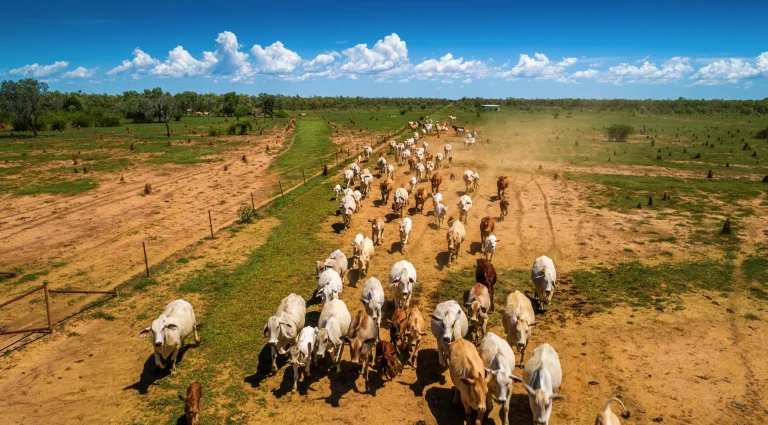Analysis of Rural Land Price Trends in the Agricultural Market
The agricultural property sector continues to demonstrate remarkable resilience and growth potential, making analysis of rural land price trends in the agricultural market a critical component for informed investment decisions. Understanding these market dynamics enables buyers and sellers to navigate the complex landscape of farmland valuations, seasonal variations, and long-term investment opportunities with confidence.
At Agribusiness Horizons, we specialize in providing comprehensive market intelligence and strategic guidance for agricultural property transactions. Our expertise in rural land price analysis helps clients identify optimal timing for acquisitions and divestments, ensuring maximum value realization in today’s dynamic agricultural marketplace. Whether you’re considering expanding your farming operations or evaluating investment opportunities, our team offers the specialized knowledge and market insights necessary for successful outcomes. Contact us today to discuss how our analysis of rural land price trends can support your agricultural investment strategy.
This comprehensive examination will provide you with essential insights into current market conditions, valuation methodologies, regional variations, and strategic considerations that influence rural property pricing across Australia’s diverse agricultural regions.
Understanding Agricultural Property Market Dynamics
The agricultural property market operates under unique principles that distinguish it from traditional real estate sectors. Rural land valuations depend heavily on productive capacity, soil quality, water availability, and climate conditions, creating a complex interplay of factors that influence pricing trends.
Agricultural land values reflect both current productive potential and future earning capacity, with investors increasingly recognizing the intrinsic value of quality farmland as a hedge against inflation and economic uncertainty. The market has shown consistent appreciation over extended periods, driven by global food security concerns and the finite nature of prime agricultural land.
Market sentiment in agricultural property remains positive, supported by strong commodity prices, favorable weather conditions in many regions, and increasing institutional interest in farmland as an alternative asset class. These factors contribute to sustained demand and price stability across most agricultural sectors.
Regional Price Variations and Market Segmentation
Analysis of rural land price trends in the agricultural market reveals significant regional variations based on rainfall patterns, soil types, and proximity to processing facilities. High-rainfall coastal regions typically command premium prices due to consistent productivity and lower climate risk, while inland areas may offer better value propositions for extensive grazing operations.
Queensland’s diverse agricultural landscape demonstrates this regional variation clearly, with prime dairy country in the southeast commanding substantially higher prices per hectare than extensive cattle grazing properties in the western regions. Similarly, intensive horticultural areas near major cities attract premium valuations due to their proximity to markets and infrastructure.
New South Wales agricultural markets show strong differentiation between irrigation districts and dryland farming areas, with water-secured properties maintaining price premiums that reflect their reduced production risk. Victoria’s high-rainfall regions continue to attract strong buyer interest, particularly for dairy operations and intensive agricultural enterprises.
The Northern Territory presents unique opportunities for large-scale cattle operations, with pricing reflecting the extensive nature of these enterprises and their specific management requirements. These regional differences highlight the importance of understanding local market conditions when conducting rural land price analysis.
Commodity Price Influence on Land Values
Agricultural commodity prices significantly impact rural land valuations, creating both opportunities and challenges for property investors. Strong commodity markets typically translate into increased land values as farmers experience improved cash flows and confidence in future profitability.
The relationship between commodity prices and land values varies by agricultural sector, with some enterprises showing stronger correlations than others. Grain-producing properties often demonstrate more direct relationships with commodity price movements, while livestock operations may show more complex relationships due to feed cost considerations.
Diversified agricultural operations tend to show more stable land values due to their reduced exposure to single commodity price fluctuations. This stability makes mixed farming enterprises particularly attractive to investors seeking consistent returns with reduced volatility.
Understanding these commodity-land value relationships enables more accurate pricing predictions and helps investors identify properties with strong value appreciation potential based on their primary production focus.
Water Rights and Infrastructure Impact
Water security represents one of the most significant factors influencing agricultural land prices, with water-secured properties commanding substantial premiums in many regions. The availability and reliability of water resources directly impact productive capacity and risk profiles, making water rights analysis essential for accurate property valuation.
Infrastructure quality and accessibility also play crucial roles in determining rural land values. Properties with excellent transport links, quality storage facilities, and modern irrigation systems typically attract premium prices due to their operational advantages and reduced ongoing capital requirements.
The integration of renewable energy systems and sustainable farming infrastructure increasingly influences property values, as buyers recognize the long-term cost savings and environmental benefits these improvements provide. Solar installations, efficient irrigation systems, and soil conservation measures add measurable value to agricultural properties.
Technological infrastructure, including reliable internet connectivity and precision agriculture capabilities, represents an emerging value driver as modern farming operations become increasingly data-dependent and technology-focused.
Investment Trends and Market Timing
Current investment trends in agricultural property reflect increasing institutional interest and foreign investment activity, creating competitive market conditions that support price appreciation. Family offices and superannuation funds are allocating increasing portions of their portfolios to agricultural assets, recognizing their inflation-hedging characteristics and long-term growth potential.
Market timing considerations for agricultural property investments involve understanding seasonal patterns, commodity cycles, and broader economic conditions. Properties often trade at premium prices during peak agricultural seasons when cash flows are strongest and buyer confidence is highest.
The emergence of environmental, social, and governance considerations in agricultural investing has created new value drivers, with properties demonstrating strong sustainability credentials attracting premium prices from environmentally conscious investors.
Interest rate environments significantly influence agricultural property markets, with low rates supporting higher valuations through reduced financing costs and increased investment activity from yield-seeking investors.
Comparison of Agricultural Property Valuation Methods
| Valuation Method | Best Application | Key Advantages | Limitations |
|---|---|---|---|
| Comparable Sales | Established markets | Market-based accuracy | Limited comparable data |
| Income Capitalization | Income-producing properties | Reflects earning potential | Requires reliable income data |
| Cost Approach | Specialized facilities | Useful for unique properties | May not reflect market value |
| Discounted Cash Flow | Investment analysis | Comprehensive financial modeling | Sensitive to assumptions |
| Productivity Analysis | Cropping enterprises | Reflects productive capacity | Weather-dependent variables |
This comparison demonstrates the importance of using multiple valuation approaches when conducting analysis of rural land price trends in the agricultural market, as each method provides different insights into property value drivers and market conditions.
Agribusiness Horizons’ Market Analysis Expertise
Our comprehensive approach to rural land price analysis combines traditional valuation methods with advanced market intelligence and proprietary data analytics. We provide clients with detailed market reports that examine price trends across different agricultural sectors, regional variations, and emerging market opportunities.
Our team’s expertise in agricultural economics enables us to identify value drivers that may not be immediately apparent to general property analysts. We assess factors such as soil quality, water security, climate resilience, and operational efficiency to provide accurate valuations that reflect true market conditions.
Through our extensive network of agricultural contacts and market participants, we maintain current awareness of transaction activity, buyer preferences, and emerging trends that influence rural land pricing. This intelligence enables us to provide clients with strategic timing advice and market positioning recommendations.
Our analysis of rural land price trends incorporates environmental, social, and governance factors that increasingly influence property values, helping clients understand how sustainability considerations impact their investment decisions and long-term value creation opportunities.
Technology and Data Analytics in Price Analysis
Modern agricultural property valuation increasingly relies on sophisticated data analytics and technology-driven insights. Satellite imagery, soil mapping, weather data, and production records provide objective measures of property performance that support accurate pricing analysis.
Geographic information systems enable detailed analysis of property characteristics, including soil types, topography, water resources, and infrastructure quality. This technological approach provides more accurate and comprehensive property assessments than traditional visual inspections alone.
Predictive analytics help identify properties with strong appreciation potential by analyzing historical performance, market trends, and environmental factors. These tools enable more informed investment decisions and better timing of market entry and exit strategies.
The integration of precision agriculture data provides insights into property productivity and efficiency that directly influence valuation outcomes. Properties with comprehensive data records typically achieve higher prices due to reduced buyer uncertainty and demonstrated performance.
Future Market Outlook and Emerging Trends
The long-term outlook for agricultural property markets remains positive, supported by global population growth, increasing food demand, and the finite nature of quality agricultural land. Climate change considerations are creating new value drivers, with climate-resilient properties commanding premium prices.
Sustainability and regenerative agriculture practices are becoming increasingly important value factors, as buyers recognize the long-term benefits of environmentally responsible farming systems. Properties demonstrating strong environmental stewardship attract premium prices from sustainability-focused investors.
The integration of technology in agricultural operations continues to influence property values, with smart farming capabilities and data-driven management systems becoming standard expectations rather than premium features.
Carbon credit opportunities and natural capital monetization represent emerging value streams that influence rural land pricing. Properties with carbon sequestration potential or biodiversity value may command premium prices as these markets develop and mature.
Strategic Considerations for Market Participants
Successful participation in agricultural property markets requires understanding both current pricing trends and long-term value drivers. Buyers should focus on properties with strong fundamentals, including quality soils, reliable water supplies, and good infrastructure, as these characteristics support sustained value appreciation.
Sellers benefit from understanding market timing and positioning their properties to highlight unique value propositions. Professional marketing and strategic pricing based on comprehensive market analysis typically result in premium sale outcomes.
Investment strategies should consider portfolio diversification across different agricultural sectors and geographic regions to manage risk and optimize returns. The agricultural property market offers opportunities for both income generation and capital appreciation when approached strategically.
Due diligence processes should incorporate comprehensive analysis of production potential, environmental factors, and market conditions to ensure informed decision-making and successful investment outcomes.
Conclusion
The analysis of rural land price trends in the agricultural market reveals a complex but rewarding investment landscape characterized by strong fundamentals and positive long-term prospects. Understanding regional variations, commodity influences, and emerging value drivers enables informed decision-making that maximizes investment returns while managing risk effectively.
Agricultural property markets continue to demonstrate resilience and growth potential, supported by global food security concerns, increasing institutional interest, and the finite nature of quality farmland. Successful market participation requires comprehensive analysis, strategic timing, and professional guidance to navigate the complexities of rural property transactions.
As you consider your agricultural property investment strategy, several important questions deserve consideration: How will climate change and sustainability requirements influence the long-term value of different agricultural regions? What role will technology and data analytics play in future property valuations? How can you position your investment portfolio to benefit from emerging trends in agricultural property markets?
At Agribusiness Horizons, we provide the expertise and market intelligence necessary to answer these questions and guide your agricultural property investment decisions. Our comprehensive analysis of rural land price trends, combined with our transaction expertise and strategic advisory services, ensures you achieve optimal outcomes in today’s dynamic agricultural marketplace. Contact us today to discuss how our specialized knowledge can support your agricultural investment objectives and help you capitalize on the opportunities within Australia’s diverse rural property markets.



